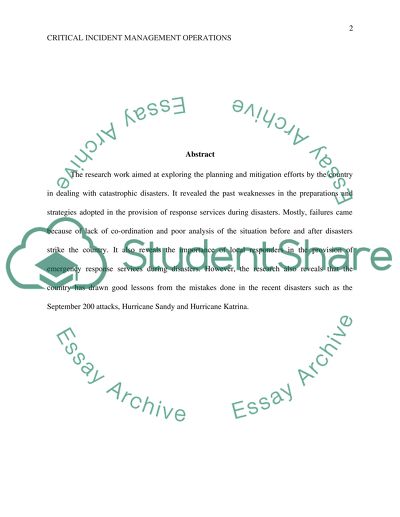Cite this document
(“Critical incident management operations based on an actual disaster Research Paper”, n.d.)
Critical incident management operations based on an actual disaster Research Paper. Retrieved from https://studentshare.org/law/1678819-critical-incident-management-operations-based-on-an-actual-disaster-event
Critical incident management operations based on an actual disaster Research Paper. Retrieved from https://studentshare.org/law/1678819-critical-incident-management-operations-based-on-an-actual-disaster-event
(Critical Incident Management Operations Based on an Actual Disaster Research Paper)
Critical Incident Management Operations Based on an Actual Disaster Research Paper. https://studentshare.org/law/1678819-critical-incident-management-operations-based-on-an-actual-disaster-event.
Critical Incident Management Operations Based on an Actual Disaster Research Paper. https://studentshare.org/law/1678819-critical-incident-management-operations-based-on-an-actual-disaster-event.
“Critical Incident Management Operations Based on an Actual Disaster Research Paper”, n.d. https://studentshare.org/law/1678819-critical-incident-management-operations-based-on-an-actual-disaster-event.


